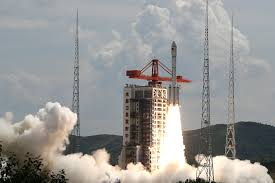Barely a week into 2025, and we’re at it again. The China Coast Guard’s vessel number 5901, dubbed “monster ship” because of how massive it is, was seen just some 65 to 70 nautical miles off the coast of Zambales, well within the Philippines’ exclusive economic zone.
From a video released by the Philippine Coast Guard (PCG), we’re able to hear an exchange of radio challenges between the 165-meter long 5901 and the Philippines’ 44-meter long BRP Cabra. Parts of the CCG’s challenge are intelligible, but here’s the gist of China’s script:
- They’re sailing through “jurisdictional waters of the People’s Republic of China” (they’re not because this is the Philippines’ EEZ).
- The 2016 Arbitral Award is “illegal and invalid” and “China neither accepts nor recognizes it” (that’s always been China’s stand).
The radio challenge ends with these lines from the 5901’s radio operator: “I hope you will safeguard peace and stability in the South China Sea and maintain mutual trust and cooperation between our countries with concrete actions.”
The incident was preceded by a Global Times editorial that painted the Philippines as the provocateur in the South China Sea, an old Chinese refrain even as we embrace a new year. This wouldn’t be the first time for the “monster” vessel to intrude into the Philippines’ EEZ. Among its more prominent incursions in 2024 happened in Escoda Shoal, before the BRP Teresa Magbanua was forced to pull out of its months-long deployment there.
The point of the 5901 is its size; it’s a way for Beijing to broadcast its claims in the South China Sea, retired United States Air Force colonel and SeaLight founder Ray Powell explained to me back in July 2024.
An attempt to assert their claims so close to Zambales (and, therefore, Scarborough Shoal) to kick off 2025 makes sense for Beijing. There remains an air of uncertainty (and, perhaps, anxiety) over the incoming Trump administration’s China and South China Sea policies, even as experts point out that there’s bipartisan support for the Philippines and nearby Taiwan in the US Congress.
“China’s narratives about who does what, who is more aggressive, or who is responsible for tensions in the South China Sea are generally ineffective in the Philippines when China is using water cannons and ramming against Filipinos there. But some of its narratives that shift the burden of de-escalation to the Philippines may still be effective as they leverage the audience’s anxiety, for example,” said Dr. Alexander Vuving, a faculty member at the Daniel K. Inouye Asia-Pacific Center for Security Studies, in an email interview with Rappler.
Vuving explained that this is critical when one thinks about Southeast Asia neighbors such as Malaysia and Indonesia, which tend to be more disapproving of ties with the US.





